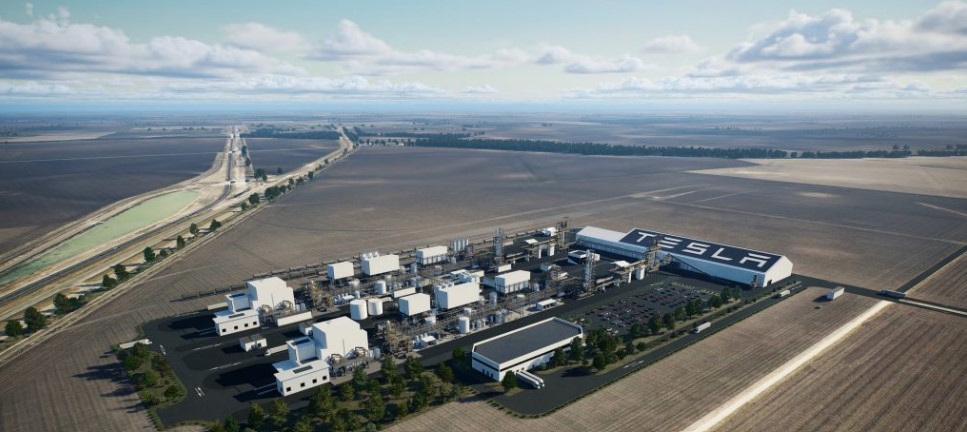Tesla recently filed for an automated sanitization system patent for its forthcoming Robotaxi self-driving electric vehicles. This solution is intended to handle emerging issues in the ride-hailing sector. The automatic sanitation system will transform the ride-hailing sector. It will eliminate the need for manual cleaning, lower operating expenses, and improve the availability and dependability of Tesla's robotaxi …
Tesla files Patent for Automated Sanitization in robotaxis

Tesla recently filed for an automated sanitization system patent for its forthcoming Robotaxi self-driving electric vehicles. This solution is intended to handle emerging issues in the ride-hailing sector. The automatic sanitation system will transform the ride-hailing sector. It will eliminate the need for manual cleaning, lower operating expenses, and improve the availability and dependability of Tesla’s robotaxi fleet.
The Challenge of Self-Driving Cars
Self-driving technology has not yet been fully solved. However, Tesla is optimistic that it will be ready shortly. Elon Musk believes it might happen any day. Removing the driver from ride-hailing vehicles raises additional issues. Drivers do more than drive; they also clean and maintain their automobiles. Without drivers, who will keep the vehicles clean?
Tesla’s new patent is titled “Controlling environmental conditions in enclosed spaces.” It proposes using a variety of sensors to monitor the vehicle’s interior. These sensors include image, acoustic, thermal, pressure, capacitive, radio frequency, and gas detectors. They monitor the environment inside the car to ensure that it remains clean.
Shared spaces present advantages in cost, efficiency, and environmental sustainability. For example, an automobile providing transportation throughout the day for multiple persons provides lower transportation costs and environmental footprint than an automobile used by only one person for personal commute. However, shared spaces have a disadvantage of facilitating indirect transmission of communicable diseases through contaminated air or surfaces. Current means for sanitizing shared spaces, for example manually wiping touch surfaces using disinfectant wipes, can be time-consuming, laborious and lead to unsatisfactory sanitation conditions. Additionally, such manually implemented activities may not be easily verifiable.
Sanitization Techniques
Tesla’s patent describes numerous innovative ways to clean the interiors of self-driving automobiles. UV lamps and a heating system are the basic ways to disinfect vehicle surfaces and air. UV radiation is known for killing various diseases, whereas heat can assist in neutralizing germs and bacteria.
Furthermore, Tesla’s technology may generate disinfectant vapor to reach locations that manual cleaning might miss. When paired with the vehicle’s HVAC system, this vapor can change the temperature and humidity to make bacteria and viruses uncomfortable. The automobile can enter a “sanitization mode,” which uses sensors to determine when the vehicle is vacant and automatically starts cleaning operations. This option may require changing seats or opening windows to maximize exposure to sterilizing light and air.
Furthermore, the patent anticipates a scenario in which the vehicle drives itself to specialized sanitization facilities equipped with robotic cleaning arms to do a more complete cleaning.
Tesla robotaxi: Sensor Capabilities
The patent describes a complex sensor array for monitoring and maintaining the vehicle’s interior atmosphere. These sensors include image, acoustic, thermal, pressure, capacitive, radio frequency, and gas detectors. They collaborate to monitor numerous environmental factors within the vehicle, including temperature, humidity, and the presence of pathogens.
The information gathered by these sensors is used to develop a personalized sanitization procedure. This routine modifies the car’s environmental conditions to achieve maximum cleaning, focusing on areas that require attention. For example, the system may detect high humidity and alter it to a drier setting to prevent bacterial growth. These sensors keep the car’s interior clean and safe for passengers by constantly monitoring it.
Impact on Ride-Hailing
The deployment of Tesla’s autonomous sanitization system could significantly influence the ride-hailing sector. By eliminating the need for human cleaning, the solution lowers operating costs while increasing the efficiency and dependability of Tesla’s robotaxi fleet. This system ensures vehicles are always ready for their next passenger, reducing downtime and increasing fleet availability.
Moreover, thorough and automatic cleaning will appeal to health-conscious customers, especially after the COVID-19 outbreak. Passengers can be confident that the car they are entering has been thoroughly cleaned. This improved hygiene might become crucial for Tesla’s ride-hailing service, enticing new users who value cleanliness and safety.
The Cybercab
Tesla intends to reveal its exclusive robotaxi vehicle, the Cybercab, on August 8, 2024. This futuristic vehicle, inspired by the Cybertruck concept, will be self-driving and will not have a steering wheel. Unlike the highly anticipated Model 2, which will still have a steering wheel, the Cybercab is intended for complete autonomy, stressing the transition to a completely automated transportation system. This car will be the centerpiece of Tesla’s robotaxi fleet, demonstrating the company’s most recent advances in self-driving technology and automated sanitization.
Tesla’s new patent demonstrates the company’s commitment to innovation. Automated sanitization technology is essential for a cleaner and more efficient ride-hailing service—Tesla’s debut of the Cybercab positions the company to lead the way in autonomous vehicle technology.
Subscribe to Our Newsletter
Keep in touch with our news & offers










